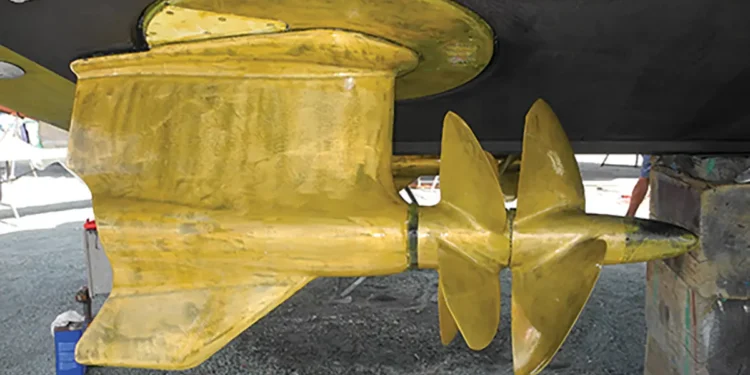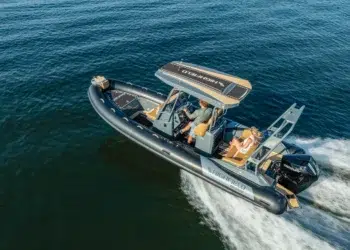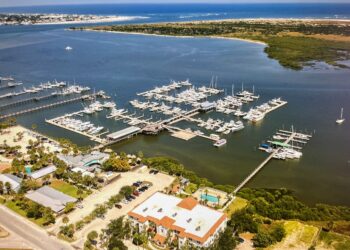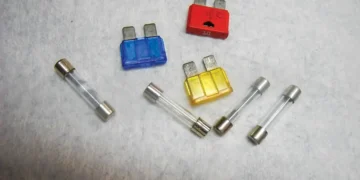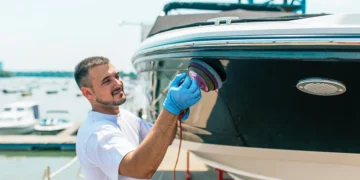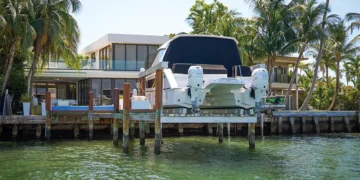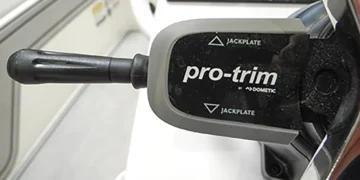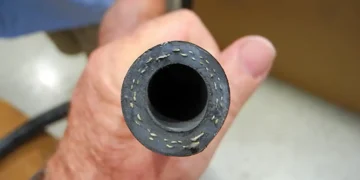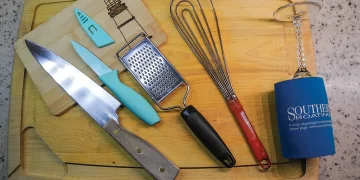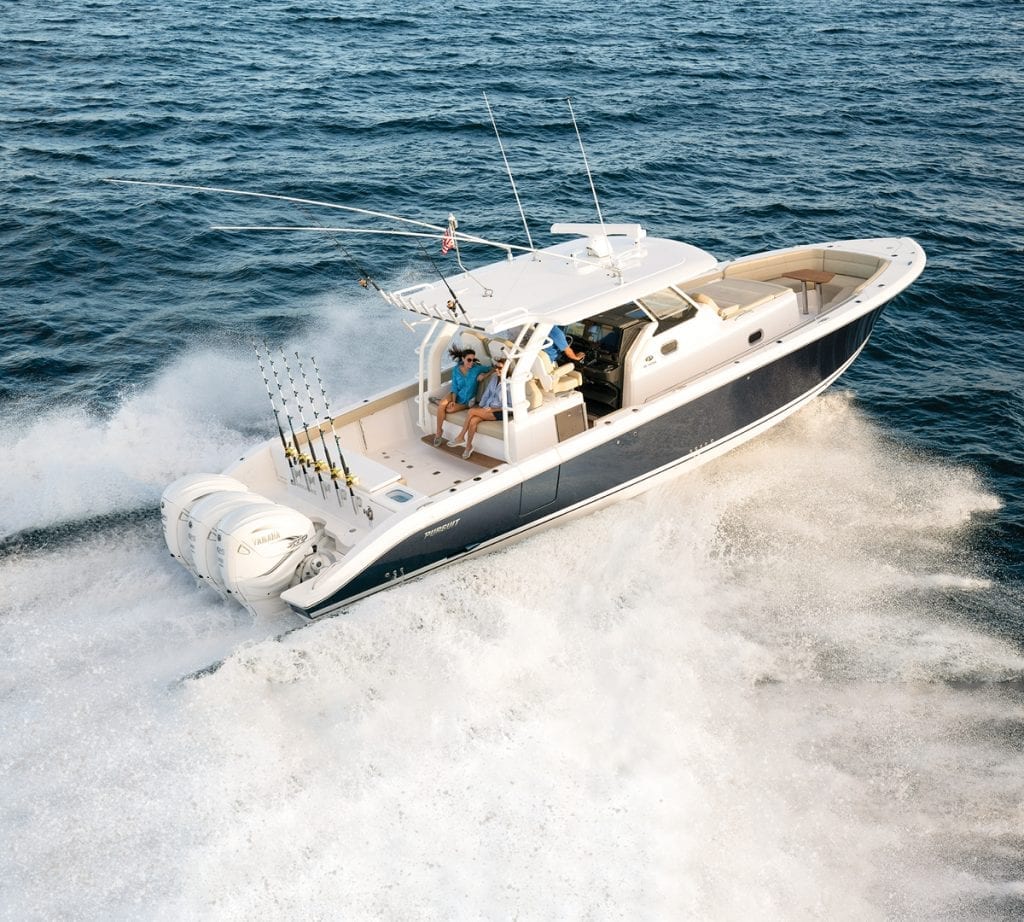Visual inspections are best when doing it yourself.
Learning DIY maintenance for your boat’s steering system may be easier than understanding the system itself. So first we will touch on some of the older systems then focus on the newer technology—and you can learn to do it yourself!
Evolution of Steering Systems
Maybe you remember the outboard vinyl-coated, stainless steel cables and pulleys. A major concern with this system is slack in the cables which can then fall off the spool under the helm steering wheel. After the first time you had that scare, you knew what to do: Just crawl under the console, put the cable back on the spool, and tighten up the tension spring near the transom pulleys.
Next came the Teleflex push-pull rod inside the outer sheath. This is a simple design but requires a little grease on both ends of the rod. Be careful when the outboard motor is tilted for trailering. The rod may kink and become cracked, allowing water to seep into the inner core. This water intrusion causes rust on the rod, restricting movement.
Also Read
US-Built Highfield Escape 650/750: Deep-V Fiberglass RIBs
Built for America (Cadillac, MI plant + vision) Highfield Boats, America’s leading RIB brand, has introduced the Escape Series, a...
Steering a Cruising Boat
The crew boats I ran in the Louisiana oil field had a mechanical cam and lever rod steering. Although a simple design, this unit is difficult to steer at cruising speeds when making major course changes. Maintenance includes greasing the fittings and keeping items away from the moving parts. Keep it neat.
Some older recreational trawlers have an industrial chain and cable steering. A chain, much like a motorcycle chain, runs across the gear on the steering wheel and transitions to a cable that runs through an industrial pulley system to the rudder tiller quadrant. It’s easy to see the entire operation movements through the pulleys. Keep fenders and dock lines away from the moving parts in the lazarette. Occasional visual inspections and lubrication is usually all that is needed. This system can also be difficult to make major course corrections at cruising speed.
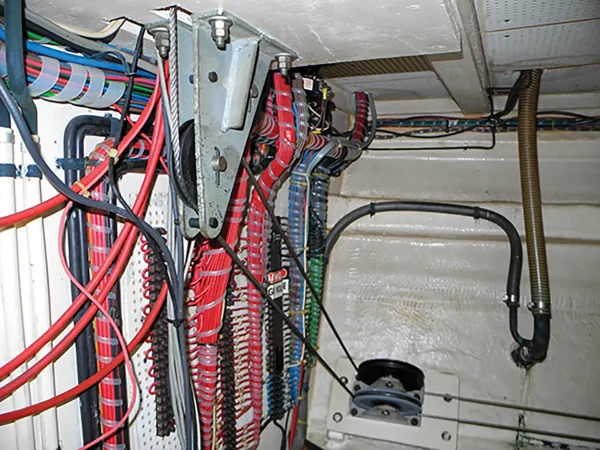
Subscribe Here For More Boating Content
Pressurized Hydraulic Steering
One popular brand of pressurized hydraulic steering is Hynautic. This design is seen on many cruising boats today. Hydraulic hoses lead from the helm to a hydraulic fluid reservoir that is pressurized to about 30 psi. Then the pressurized hydraulic fluid continues to the steering ram which provides rudder control.
Boats like to be used, and hydraulic systems are no different. A common issue with hydraulic steering is non-use resulting in loss of air pressure. The fluid does not leak, but the air pressure seeps out. Just like when your bicycle tires go soft, the DIY solution here is to use a bicycle air pump to pressurize your boat’s steering reservoir. Pump it up until you reach the pressure listed on the tank decal. If you lost hydraulic fluid, then you have a seal leak and that may require a call to the boatyard to remove and replace the seal.
DIY For More Powerful Boat Steering Systems
Boats keep getting bigger, faster with more horsepower, and they need more powerful steering systems. Some existing hydraulic designs can be improved by installing an electric power assist pump. The pump senses the hydraulic fluid motion. It activates the electric pump to use more force that will turn the outboards or rudders. Basic DIY for this power assist pump is to carry an easily replaceable spare fuse.
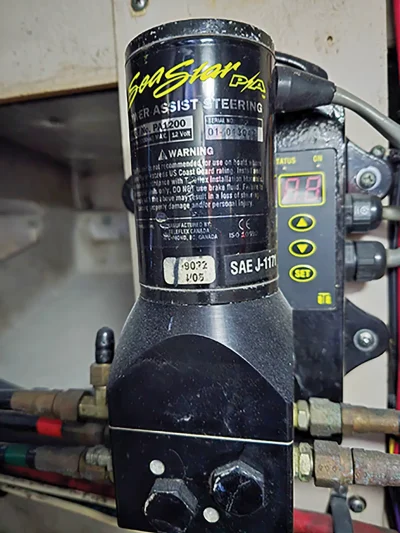
Many newer boats use a system known as fly by wire. This sends an electronic signal to the steering actuator. Steering becomes effortless and easy to make fast course corrections.
Yachts manufactured with inboard engines will have an electrical cable running from the helm to the lazarette. In the lazarette, the steering motor energizes a hydraulic pump to move the rudders. DIY maintenance is to keep the system clear of fenders and dock lines in the lazarette and check the circuit breakers or fuses for the electric system.
Larger horsepower outboards (300-hp plus) may be using electrical steering. Some of the mid-range outboards may have a hydraulic steering pump mounted to the motor itself. Be sure to carry the correct spare fuses for them as well.
Many boats have an auto pilot system where the AP computer sends electrical commands to the steering actuator. This system also relies on fuse protection.
Also Read:
Mission Accomplished …. And the 100-foot Boat Slip
From backyard shed to industry benchmark: In the fall of 2021, my client, a retired physician from Ponte...
POD Drives
Volvo IPS is the more common system we see on the water, and it uses a pure electric steering system that moves the entire POD unit under the boat. An amazing feature of the fly by wire system with joystick control is the unbelievable maneuverability that it offers. When steering in tight quarters, push the joystick where you want the boat to go. The PODs or even outboards will steer opposite directions and may also put one in reverse while the other is forward. This is all done by computer using electronic gear and throttle control.
The best DIY is to visually inspect your steering system for any kinks, low air pressure, corroded electrical connections, fuses, or circuit breakers.
Keep it clean, make sure you have a power supply with proper fuses, and steer like a pro!
-by Capt. Chris Caldwell
Editor’s Note: Teleflex Marine was purchased and became SeaStar Solutions which has rebranded to Dometic Marine.


